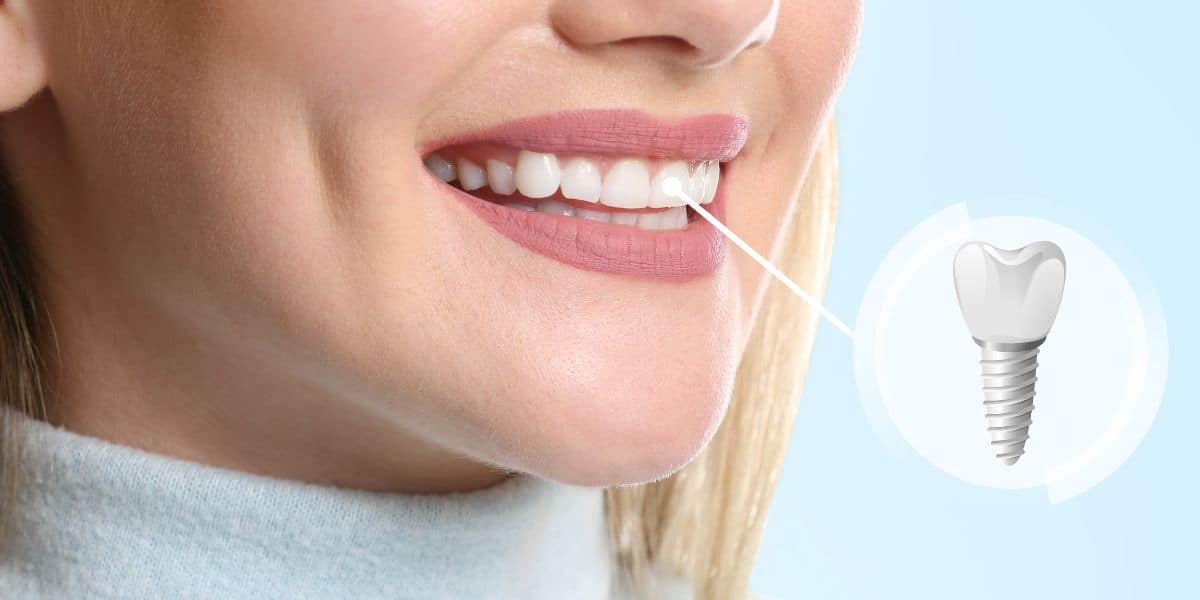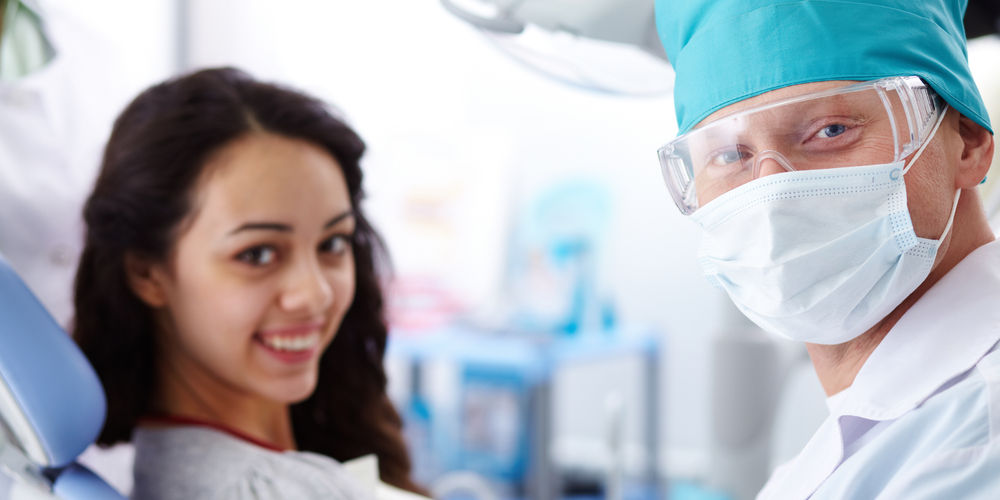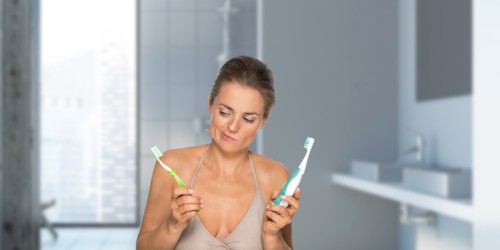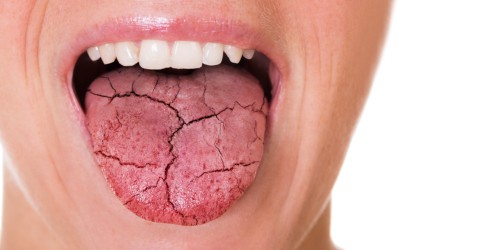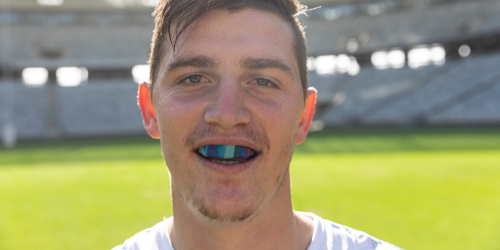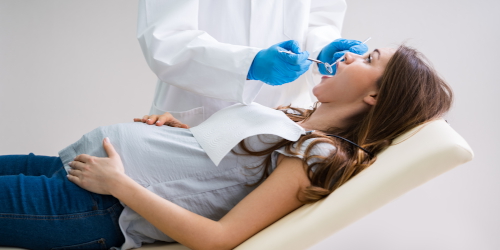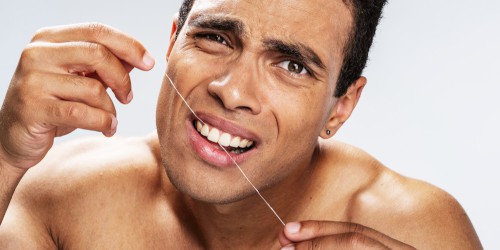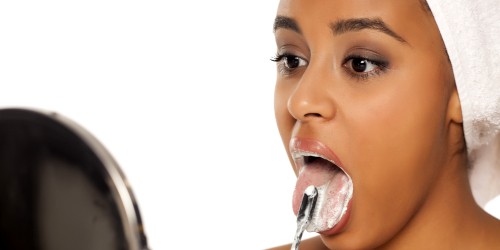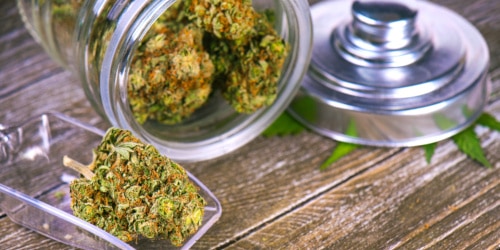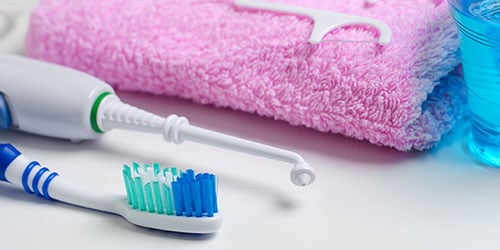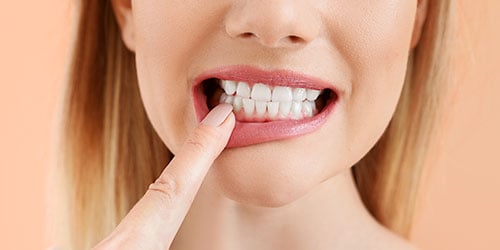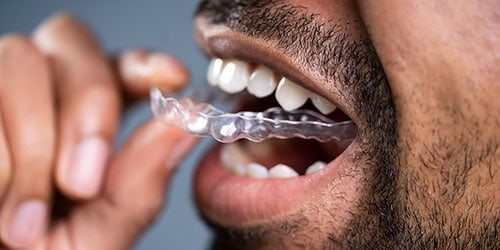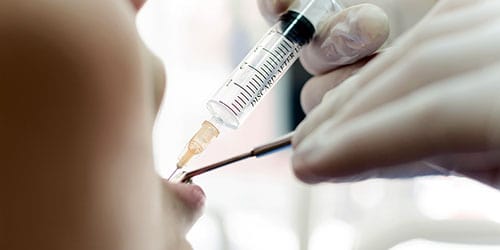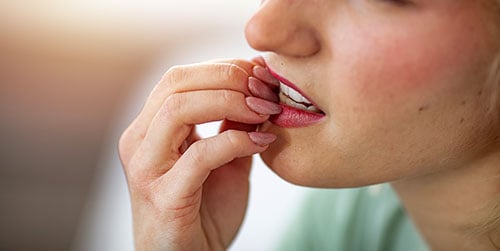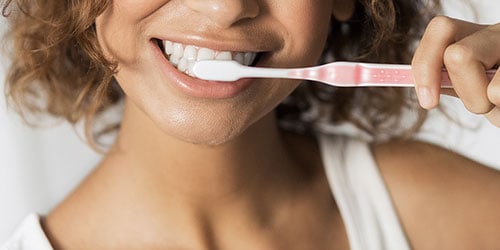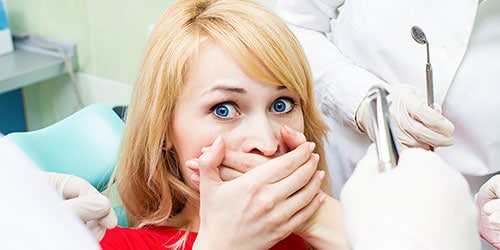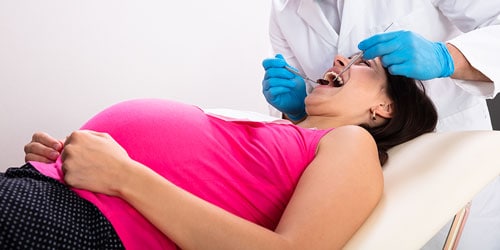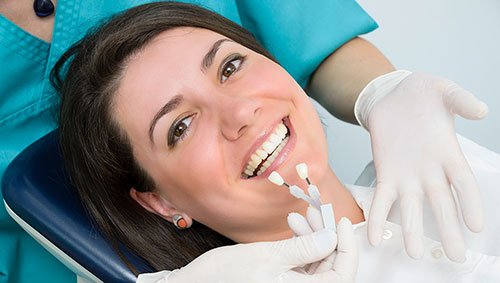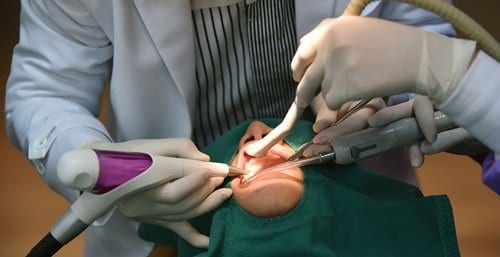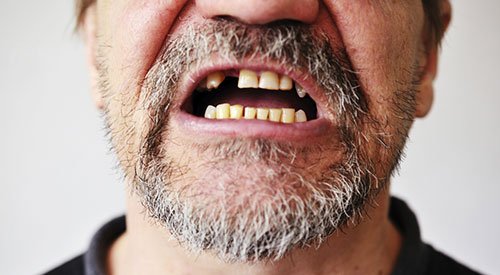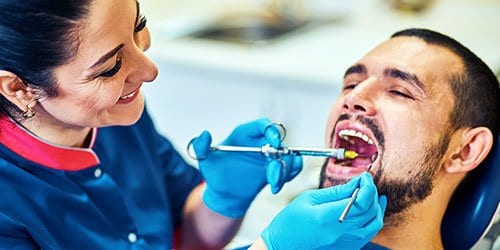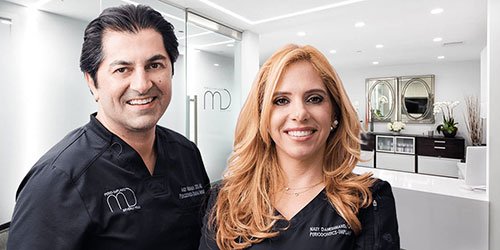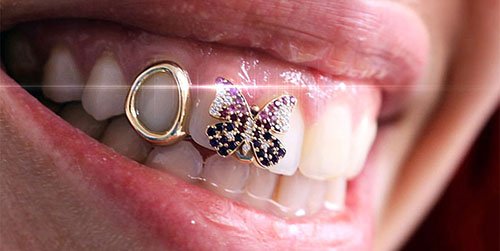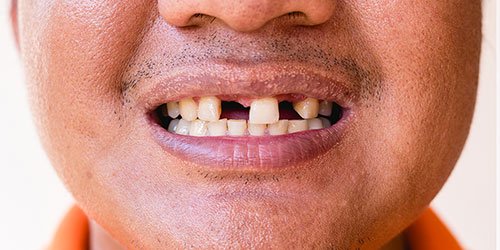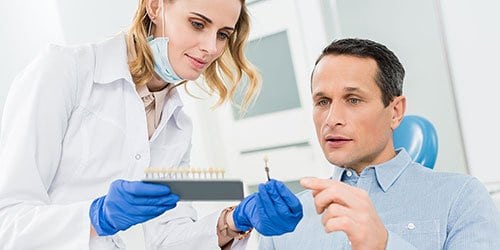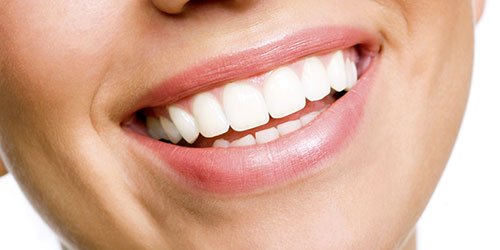What are receding gums?
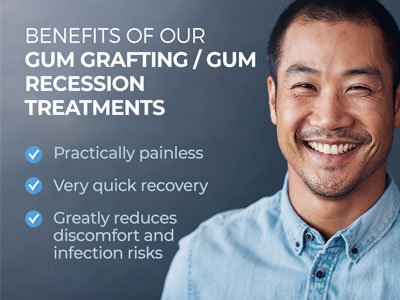
Your gums (called gingiva by dentists) provide a nourishing and stabilizing environment for your teeth. When gum recession occurs, the root surfaces of the tooth become exposed. So when your gum tissue erodes or recedes (like a hairline) this can increase the likelihood of root decay, bone loss, and loosening of teeth. It is also why gum recession patients often report sensitivity to hot and cold foods along with an unsightly appearance of the gum and tooth.
By addressing receding gums early, you can avoid having more invasive periodontal procedures later. Healthy gums and teeth not only mean good oral health but also enhance your overall health
What are symptoms of Gum Recession?
Gum recession (also called gingival recession) occurs at a variable rate. It’s possible you won’t be aware of it in its early stages until it is diagnosed by your dental hygienist during a dental cleaning or when your gum recession becomes symptomatic.
As gum recession progresses to an advanced stage, notable symptoms could include:
- Soreness and bleeding at the gum line
- Exposure of the tooth root (seen with more severe gum recession)
- Teeth appearing longer due to gum erosion, revealing more of the tooth that was previously covered by the gums
- Tooth sensitivity—when gum receding results in exposed roots, the teeth become more sensitive to other stimuli, such as heat and cold
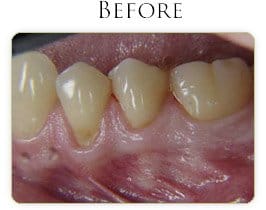
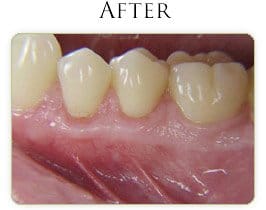
What causes gums to recede?
There are a number of variables that can cause your gums to recede. These include:
Poor Oral Hygiene
Failing to brush and floss daily can lead to not only plaque buildup and tooth decay but also serious periodontal disease.
Aggressive brushing
Brushing with too much force using either a manual or an electric toothbrush can cause damage. The bristles can erode the delicate gum tissue and even cause bleeding gums.
Genetics
Some people are simply genetically predisposed to periodontal disease, despite practicing good oral care habits such as regular brushing, flossing, regular dental cleanings, and checkups.
Bad tooth alignment
Crooked teeth can push the gums out of place and cause them to recede.
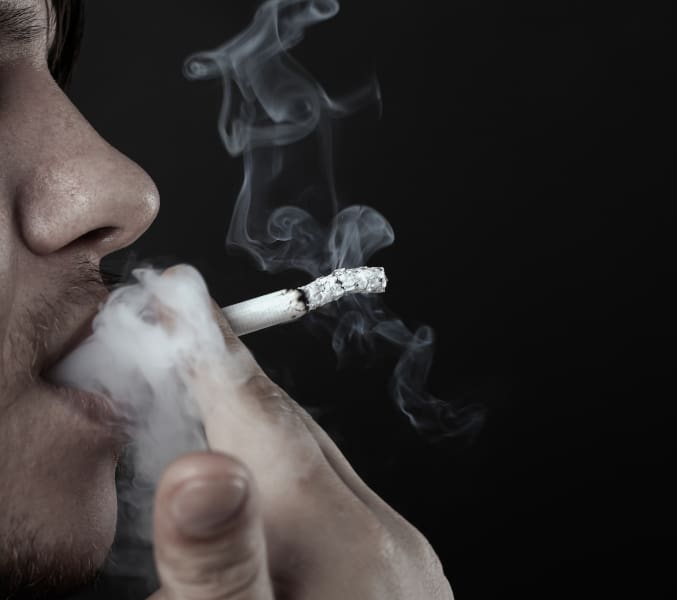
Smoking and chewing tobacco
These habits produce a lot of tooth plaque, which can lead to inflammation and irritation of the gums.
Teeth grinding and jaw clenching
Teeth grinding and jaw clenching can contribute to gum recession by weakening the gum/tooth root junction.
Prior orthodontic treatment
Previous improperly performed dental treatments can result in stretching of the gums. This can create a pocket where tartar, plaque, and bacteria can accumulate, leading to bad breath, gum disease, and, eventually, even tooth loss.
Backed by an expert team of dental professionals, MD Periodontics offers outstanding dental care in a state-of-the-art facility…
Can gum recession be reversed?
Yes. Luckily there are three different types of gum treatments for receding gums, but how do you find the best periodontist who knows and know how to treat gum recession? Los Angeles is lucky to have two board-certified periodontists conveniently located in Beverly Hills with vast experience in treating gum recession. Dr. Abdy Moshrefi, DDS, and Dr. Nazanin Daneshmand, DDS, have well over thirty years of combined experience that qualifies them to give your gums exactly the treatment they need.
Gum Grafting Procedure
If your gums have receded to the point of causing recurrent symptoms, exposing the roots of your teeth, or destabilizing your teeth, the most popular treatment option is to build up your natural gums using graft tissue.
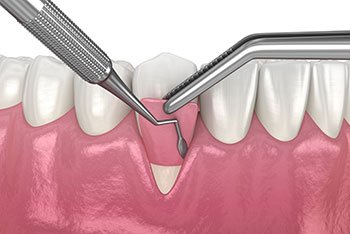
A gum graft can be performed in several ways. The most common grafting methods are a free-gingival graft (where a piece of gum tissue is cut from somewhere else in your mouth and attached to the gum deficient site) and a connective tissue graft (where a flap of tissue adjacent to the graft site is cut and swung over to cover the exposed tooth root) and secured with sutures. This soft tissue will join with the existing gum tissue and heals in about eight weeks. Unlike gum scar tissue, which lacks the appearance and elasticity of natural gum tissue, a gum graft restores the tissue to its normal appearance and elasticity.
And does gum grafting hurt? No.
Advanced Platelet Rich Fibrin (aPRF)
In the past 10 years, periodontists have come up with an alternative to grafting. This process involves using platelet enriched fibrin clots made from the patient’s blood in order to stimulate gum tissue growth to fill in the gaps without the use of grafts.
Pinhole Surgical Technique (PST)
In recent years, a handful of specially-trained periodontists have been performing a seemingly simple but elegant surgical procedure to correct receding gums with great success. This technique not only offers a quick recovery but has also spared many patients the discomfort associated with harvesting graft tissue from the roof of their mouth. During a PST procedure, your periodontist uses specially designed hooks to work within the layers of your gum tissue to gently coax it down to cover more of your tooth.
During your consultation and after a careful examination, Dr. Moshrefi or Daneshmand will review your options and recommend the least invasive and most effective method of repairing any gum deficiencies.
Where does gum graft tissue come from?
Graft tissue can be derived from two different sources: from the patient or from an outside source.
Auto-graft tissue
Autografts are tissue that is sourced from the patients themselves. Historically, donor sites for graft tissue have included the soft palate on the roof of your mouth, an area behind your molars called the retro-molar pad, the graft site itself, or from gum tissue that’s located adjacent to your graft site. Ten years ago, stem cell technology was harnessed to allow periodontists to grow gum tissue using a small sample of patient blood.
Advanced Platelet Rich Fibrin uses your stem cells to grow gum tissue
You may have heard of PRP (platelet-rich plasma) as a therapy used to stimulate joint healing in athletes. This technology involves taking a small sample of blood (10 ml) and spinning it in a centrifuge for several minutes. The components separated from the blood are then used to form a clot that is rich in growth factors and stem cells. This clot has properties that promote quick healing and the creation of new tissue when it is embedded within a wound (inside gum tissue, in this case).
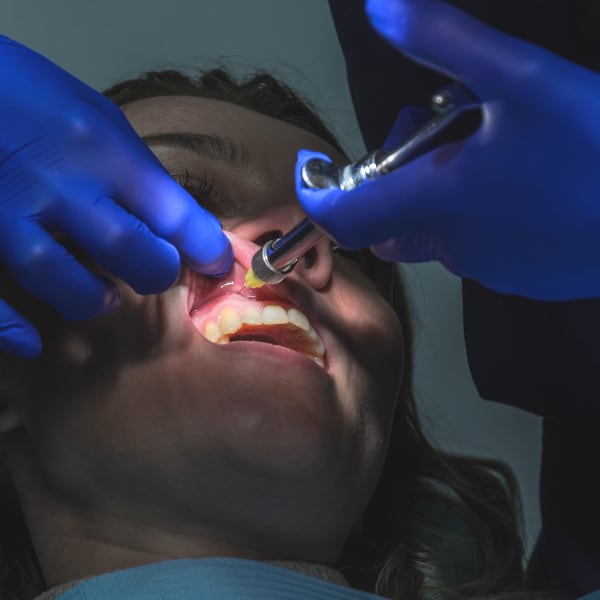
Advanced Platelet Rich Fibrin (aPRF) is placed within pockets made in the gums just above the tooth in areas where the gums have receded. Over the next couple of weeks, the aPRF stimulates the body to create new gum tissue that fills in the gap that had been created by the receding gum.
The advantages that fibrin-assisted grafting has over auto-grafting include:
- Decreased healing time
- Much less patient discomfort than is involved with harvesting graft tissue from within the mouth
- Virtually no risk of rejection (because it involves the patient’s own tissue)
- A much lower chance of infection
These advantages have made aPRF useful for other dental applications in addition to treating receding gums.
Allo-graft tissue
Allo-grafts are graft tissues that are externally sourced. Most allografts used for periodontal use are of human origin. The donor graft tissue is processed in a lab where the tissue undergoes strict rigorous protocols to be sure that it is sterile and all the live cells have been removed in order to reduce the chance of infection or rejection.
Allo-grafting used to be the method of choice in situations where patients didn’t have sufficient tissue to graft large areas of gum recession.
When the grafting is performed by an experienced periodontist, excellent outcomes can be achieved using allograft tissue.
Why choose MD Periodontics for your gum recession, Los Angeles?
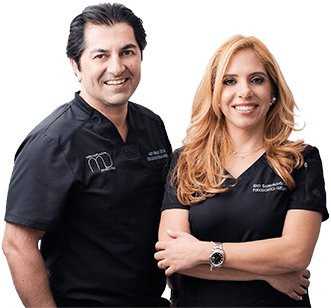
The husband-and-wife team of Dr. Abdy Moshrefi, DDS, and Dr. Nazanin Daneshmand, DDS, are two of the most trusted periodontists in Beverly Hills. Both are board-certified in periodontics and implantology and between them, they have nearly three decades of experience.
Backed by an expert team of dental professionals, MD Periodontics offers outstanding dental care in a state-of-the-art facility with a warm, welcoming family environment where our patients are truly treated like family.
Schedule a consultation or call (310) 859-9449. Your smile will thank you!
We have convenient accessibility for patients throughout Southern California and the Los Angeles area. Our Beverly Hills office is conveniently located near West Los Angeles, Culver City, West Hollywood, Downtown Los Angeles, Marina del Rey, Pacific Palisades, Malibu, Manhattan Beach, Sherman Oaks, and Encino.
Gum grafting FAQs
When is it too late for gum grafting?
It’s never too late for gum grafting as long as the patient has sufficient gum tissue to harvest for the graft. However, the success rate of the procedure may be lower in cases where the patient has advanced gum disease or other underlying health issues that can affect the healing process.
Is gum grafting painful?
Most of our patients do not experience pain. If there is mild discomfort, it can usually be managed with over-the-counter pain relievers, such as ibuprofen.
How long do stitches stay in after gum graft surgery?
Generally, stitches used in gum graft surgery are designed to dissolve on their own and do not require removal. The dissolvable stitches used in gum graft surgery can take anywhere from one to three weeks to dissolve completely, depending on the type of suture material used and the patient’s individual healing process.
What to eat after gum graft?
After gum graft surgery, it’s important to eat soft, cool, and nutrient-rich foods that are easy to chew and will not irritate the healing graft site.
It’s important to avoid hot or spicy foods, crunchy or hard foods, and acidic foods and drinks for the first few days after surgery as these can irritate the graft site and slow down the healing process. It’s also important to drink plenty of water and avoid using straws, which can cause suction that can disrupt the graft.
How long after gum graft can I eat normally?
After a gum graft surgery, it’s important to follow a soft food diet for the first few days to allow the graft to heal properly. You can slowly begin to introduce firmer and more solid foods into your diet after the first week, depending on your comfort level and the instructions provided by your periodontist.
How long does a gum graft take to heal?
Generally, it can take anywhere from two to six weeks for the graft site to fully heal.
Is gum grafting covered by insurance?
Gum grafting may be covered by dental insurance if it is deemed medically necessary, such as to treat gum disease or to address functional issues with the teeth or gums. However, if the procedure is being done for cosmetic reasons only, it may not be covered by insurance.
 (310) 859-9449
(310) 859-9449 Gum Grafting
Gum Grafting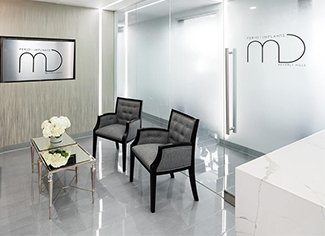
 or call us at
or call us at 




